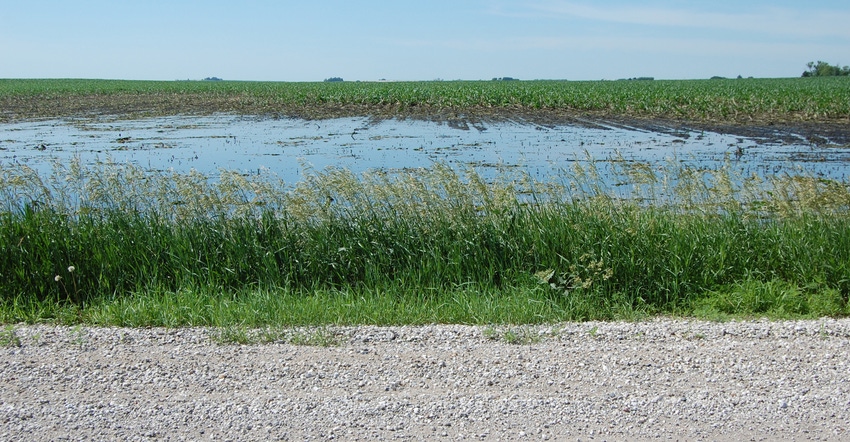June 16, 2017

By Mark Licht
Farming in the Des Moines Lobe often means growing corn and soybeans in prairie potholes. Similarly, other areas of the state deal with low-lying areas that have some of the same problems as prairie potholes: higher cost of production due to more frequent replantings, lower yield potential and, consequently, lower profitability. With tight profit margins this year and last, consider a more economical and environmental use for those areas.
Prairie potholes account for about 3.5 million acres (44%) of the Des Moines Lobe landform. These soils were naturally wetland soils until intensive agriculture and artificial drainage came into being. Most farmers know these potholes are not holes with clear boundaries. Sometimes they can be found in upland locations and other times as riparian wetlands.
Through artificial drainage, these soils have become part of the row crop systems common across Iowa. In dry years, even when tiled, these areas are the most productive soils. However, more often than not, in normal-to-wet years these areas struggle to be profitable. These soils have poor natural drainage and shallow water tables that limit root growth and productivity due to seedling diseases, root rots and poor nutrient uptake.
Should potholes and wet areas be farmed?
All of this begs the question: Should prairie potholes and other perennially wet areas be farmed? Even with tile drainage systems, these areas pull down field average yields the majority of years. This question is just as much about the social and economic aspects as it is about productivity. Can high corn and soybean costs of production be justified when the return on investment in those areas is negative 50% to 80% of the time? There is an opportunity of land-use change in these soils and field areas to minimize nutrient loss, increase wildlife habitat and provide ecosystems services.
Those in control of farmland should consider alternatives to augment the traditional row crop system with crops and practices that can have benefits beyond increasing profitability. A small step is to consider the following alternative uses for wet areas at field edges:
• Conservation Reserve Program plantings that benefit bees, monarchs and other wildlife
• perennial grasses that can be grazed, cut for forage or used as a biofuel feedstock
• wetland restoration through the Wetland Reserve Program
These alternatives need to be well-suited to the landscape and should complement the surrounding cropping system.
Use alternative practices on marginal land
Alternative practices that result in a land-use change on field areas considered to be marginal for row crop production systems will have far-reaching benefits. Often, these marginal row crop acres are the biggest sources for nutrient loss and areas with poor soil heath. Consider an alternative that can greatly reduce nutrient losses, increase soil health, improve biodiversity and offer more wildlife habitat from only a small portion of the landscape.
Such a land management change will require a commitment of both tenant and landowner. It could even require a partnership among neighboring tenants and landowners. These conversations could take time to come to an agreeable solution. But these types of arrangements and conversations are crucial for continued economic success that includes ecological benefits.
Licht is an Iowa Learning Farms team member and assistant professor and Extension cropping systems specialist at Iowa State University.
You May Also Like




